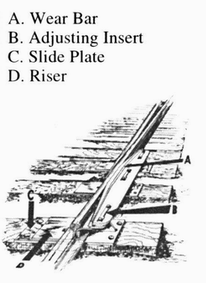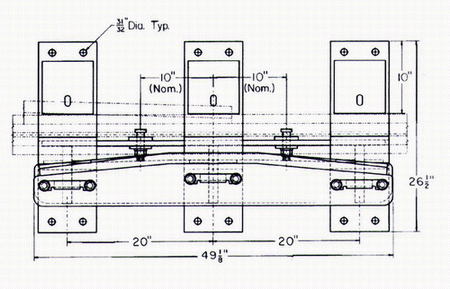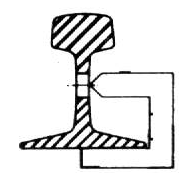General
| Track accessories are dependent on the track structure to which they are secured. Worn, small or weak ties flex under traffic. Untamped ties can cause excessive vertical torquing. Any switch point guard attached to an inadequate track structure will give poor service and may be subject to premature failure. Be sure the track is in sound condition before installing the Model FM, or any switch point guard. |
|
Installation Without Bolting To
Rail
Installation With Bolting To The Rail
|
Fig. 7
Fig. 8
|
|
Maintenance Occasional inspection for wear and bolt tightness are the only regular maintenance requirements. When Dimension "A" shown in Fig. 10 measures 4-3/16" to 4-5/16", the Adjusting Inserts should be unbolted and turned (See Fig. 2). Doing so will provide an additional 1/4" wear capacity. Do not turn Adjusting Inserts until Dimension "A" measures at least 4-3/16", or the Wear Bar may cause train wheels to bind against the opposite rail from point.
Fig. 9 |
Fig. 10 |
Grinding ----
Manganese steel is a work-hardening material. In its original condition,
it tests about 230-250 bhn. After "wearing in", it will achieve
a surface hardness of up to 550 bhn. During this process, the material will
have a tendency to flow. Depending upon service, sometimes a ridge or groove
will develop. The Wear Bar should be ground carefully to remove only the flowed
material, but not the already hardened portion. More than one grinding may
be required before the material is set and hardened to capacity. Lighter initial
service, lessens the need for grinding. Heavy impact from long cars on tight
curves will result in a requirement for more frequent grinding.



